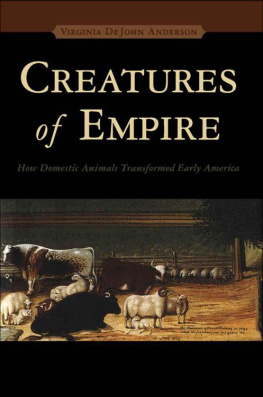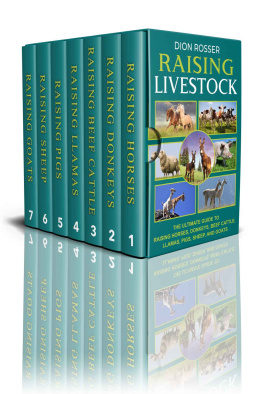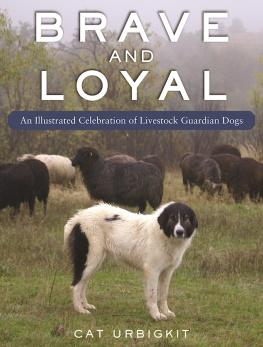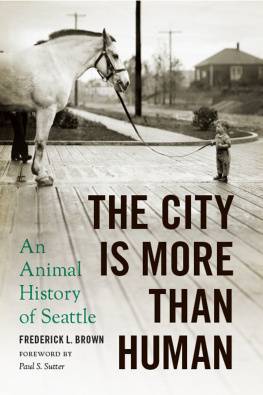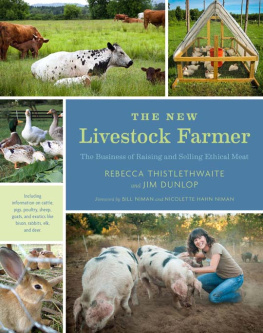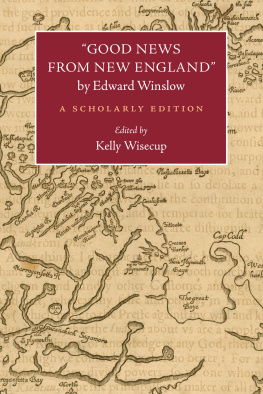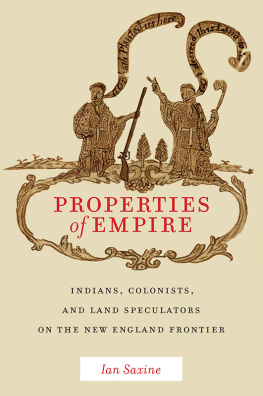Creatures of Empire
Creatures of Empire
HOW DOMESTIC ANIMALS TRANSFORMED EARLY AMERICA
Virginia DeJohn Anderson


Oxford New York
Auckland Bangkok Buenos Aires Cape Town Chennai
Dar es Salaam Delhi Hong Kong Istanbul Karachi Kolkata
Kuala Lumpur Madrid Melbourne Mexico City Mumbai Nairobi
So Paulo Shanghai Taipei Tokyo Toronto
Copyright 2004 by Virginia DeJohn Anderson
Published by Oxford University Press, Inc.
198 Madison Avenue, New York, New York 10016
www.oup.com
Oxford is a registered trademark of Oxford University Press
All rights reserved. No part of this publication may be reproduced, stored in a retrieval system, or transmitted, in any form or by any means, electronic, mechanical, photocopying, recording, or otherwise, without the prior permission of Oxford University Press.
Library of Congress Cataloging-in-Publication Data
Anderson, Virginia DeJohn.
Creatures of Empire : how domestic animals transformed early America / Virginia
DeJohn Anderson.
p. cm.
Includes bibliographical references and index.
ISBN 0-19-515860-1
1. LivestockUnited StatesHistory.
2. LivestockSocial aspectsUnited StatesHistory.
3. Human-animal relationshipsUnited StatesHistory.
4. Indians, Treatment of.
5. United StatesColonial period, ca. 1600-1775.
6. AmericaColonizationSocial Aspects.
I. Title.
SF51.A655 2004
636.0973dc222004043401
Portions of this book were published, in different form, in the following:
King Philips Herds: Indians, Colonists, and the Problem of Livestock in Early New England, William and Mary Quarterly, 3rd ser., 51 (1994): 601-24.
Animals into the Wilderness: The Development of Livestock Husbandry in the Seventeenth-Century Chesapeake, William and Mary Quarterly, 3rd ser., 59 (2002): 377-408.
Chickwallop and the Beast: Indian Responses to European Animals in Early New England, in Colin G. Calloway and Neal Salisbury, eds., Reinterpreting New England Indians and the Colonial Experience. Publications of the Colonial Society of Massachusetts. Boston, 2003.
Design by planettheo.com
9 8 7 6 5 4 3 2 1
Printed in the United States of America on acid-free paper
for fred
Contents
Prologue
Seeing Banquos Ghost
Part I
Thinking about Animals
One
Chickwallop and the Strange Beast:
Indians and Animals in Early America.
Two
The Deer with the Red Collar:
English Ideas about Animals
Part II
Settling with Animals
Three
The Company of Cattle:
Domestication and Colonization.
Four
The Wild Gangs of the Chesapeake:
Livestock Husbandry in the South.
Five
A World of Pastures and Pounds:
Raising Livestock in Early New England.
Part III
Contending with Animals
Six
Forgiving Trespasses:
Living with Livestock in Early America
Seven
A Prophecy Fulfilled:
From Cooperation to the Displacement of Indians.
Epilogue
Full Circle
Acknowledgments
When I began this book, I had no idea what its final shape would be. I have often felt as if I were trying to assemble an exceedingly intricate jigsaw puzzle, with several key pieces missing and no box cover to indicate what the completed picture should look like. Fortunately, like many puzzle-solvers and most authors, I received a great deal of assistance as I toiled away on the project. Some people helped me to decide where a certain piece of evidence might go; others urged me to stand back now and then and try to figure out the dimensions of the whole picture. Still others simply encouraged me to keep at it. I am pleased to be able at last to extend my deepest thanks to all.
I received institutional and financial support at several crucial stages. A fellowship from the Charles Warren Center at Harvard University, supplemented with photocopying funds from the University of Colorados Graduate Committee on the Arts and Humanities, helped at the outset of the research. I wrote much of the first draft with fellowship support from the American Council of Learned Societies. And I am grateful to Todd Gleeson and Philip DiStefano, Dean of Arts and Sciences and Provost, respectively, of the University of Colorado at Boulder, for the precious gift of time that allowed me to complete the book. The staff at the Interlibrary Loan Office at Norlin Library also provided frequent and timely assistance.
Several scholars have given generously of their time, energy, and expertise to read portions of the manuscript, sometimes more than once, and offer wise advice and useful criticism. Jon Coleman, Vine Deloria, James Drake, Thomas Field, and Marjorie McIntosh approached the work from a variety of perspectives, making valuable suggestions for improvement. So too did the anonymous readers of those parts of the book published in preliminary form in other venues. James Merrell and Daniel Richter not only provided judicious criticism of the manuscript but also, through the example of their own scholarship, set a high standard for the rest of us who seek to understand the complicated history of intercultural encounters in early America. I thank them all for their help, and take responsibility for any errors or shortcomings that remain.
Many friends and colleagues have offered steady encouragement over the years, listening with remarkable patience whenever I rambled on about this project and my frustrations with it. Gloria and Jack Main served as models of scholarly integrity and unstinting friendship; I wish I had finished the book in time for Jack to read it. Peter Boag, Constance Clark, Steven Epstein, Robert Ferry, Julie Greene, Martha and Bob Hanna, Christopher Jedrey, Susan Kent, Scott Miller, Mark and Sharon Pittenger, and Jon Roberts are no less deserving of my deepest gratitude for their advice and moral support. I should also thank the countless graduate and undergraduate students in my classes at the University of Colorado, captive audiences who have at least feigned interest in my work and humored me whenever I told stories about livestock when I should have been talking about something else. In his own inimitable way, Bernard Bailyn has supported this book from its inception, and I hope he agrees that there is some news in its pages.
Two people expertly shepherded the work along the path from manuscript to book. Lisa Adams, of the Garamond Agency, helped me to see the potential lurking within a project that often seemed irremediably diffuse. Susan Ferber wielded her editors pen with masterful precision, saving readers from digressions and infelicities that I would otherwise have inflicted upon them. I also thank Catherine Humphries for her careful production of the completed manuscript. Proofreaders Jamie Kreiner and Jen Simington did an excellent job, as did Pete Brigaitis and Marie Nuchols with their work on the index.
The book has benefited as well from the wise counsel of two scholars and friends. Susan Jones, my colleague at Colorado, drew upon her dual training as veterinarian and historian to guide me through conceptual difficulties and save me from embarrassing errors. Her steady support has been invaluable. I could blame Barbara DeWolfe for making this book take so many years to produce, but instead I will thank her. Her insightthat I ought to examine the Chesapeake colonies as well as New Englandwas exactly right. To the extent that the books value derives from its comparative framework, the credit belongs to Barbara.
Next page
